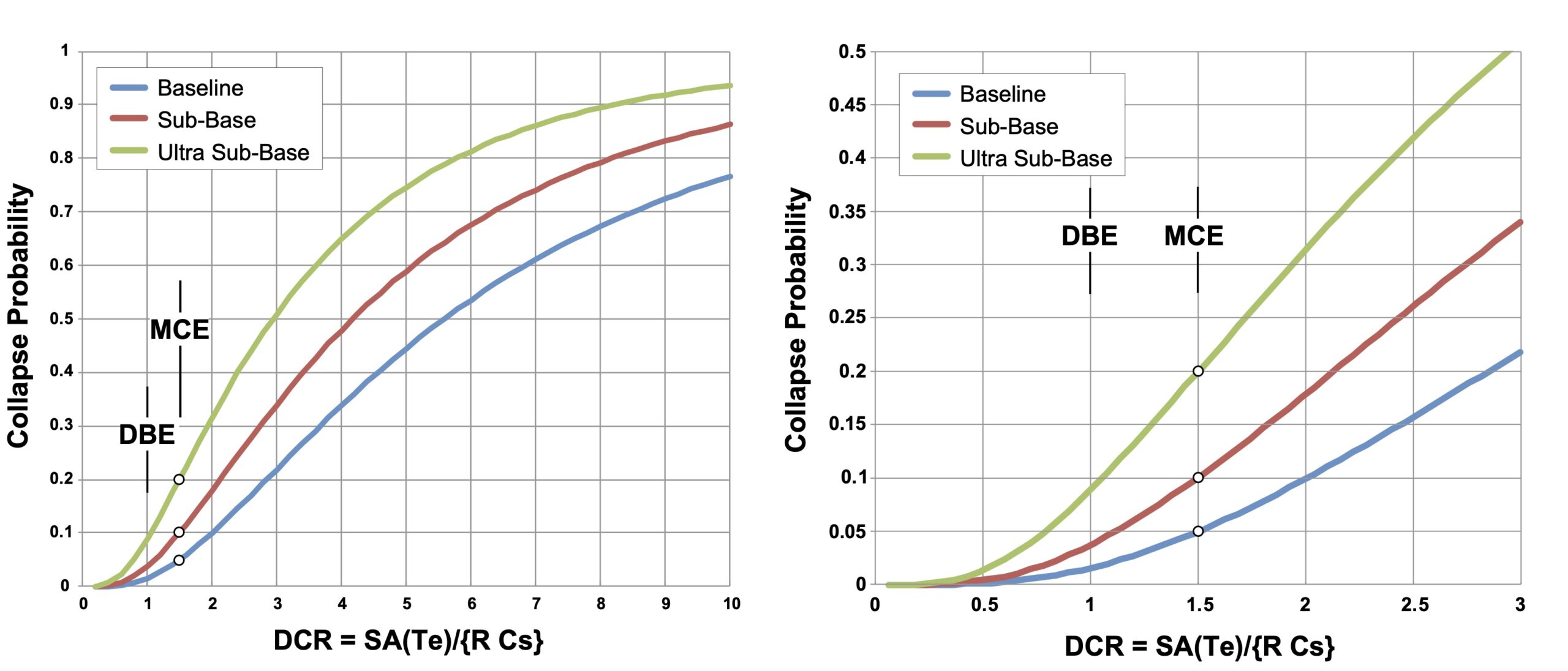Probability of Collapse in User-defined Exposure Interval
We have rolled out a new feature: the computation of collapse probability for a user-defined exposure interval or “hold time.” We find it to be the simplest, most understandable output for reporting on Building Stability for ASTM E2026 Level 1 studies.
Our clients all have some time period over which they intend to “hold” the asset – 10, 20, 30 years or more. For instance, a lender may be interested in risk over the life of a loan. Seismic design code for new buildings looks at a 50-year exposure and targets a collapse probability of less than 1% in that “building life” for normal Risk Category II structures. So clients can easily choose a relevant “hold time” and compare collapse risk to a target of 1%.
The feature uses collapse fragility curves from CODA-Collapse [Graf, Imani & Lee, 12NCEE, 2022], but integrates over the full range of hazards, similar to the method for adjusting MCE motions to MCER [Luco et al., SEAOC Proceedings, 2007]. The method is calibrated so that a new building built to current code (design basis = 2/3 MCER) has Pcol(50 years) ≤ 1%. It uses ASCE 41 Evaluation Statements as a guide to the assignment of a Collapse Performance Category, similar to OSHPD-HAZUS its “offspring,” FEMA P-154.
This new output supplements the current tabulation of collapse probability for probabilistic scenarios having return periods of 50, 72, 225, 475, 975 and 2475 years. Damage estimates (PL, PML, SL, AAL) are adjusted for collapse risk in excess of Baseline collapse performance, so damage levels and collapse performance are more consistent.
Give it a try!

